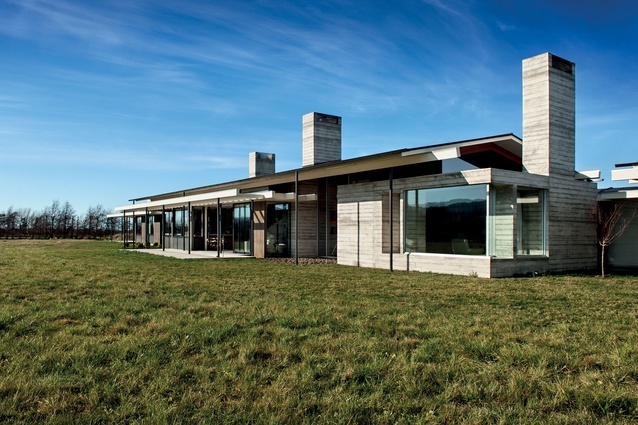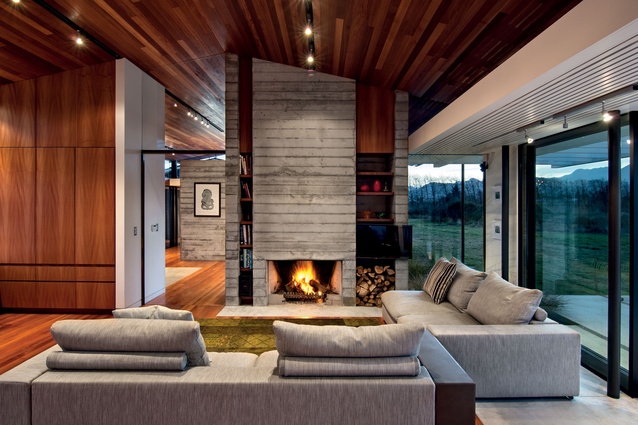Houses revisited: Wairau Valley house
Of the land – this contemporary home merges indoors with out. First published in 2013.
Rustic wood accented with white and concrete is a combination to conjure with. Nestled in a bucolic riverine landscape of vineyards, farms, orchards and gently rolling hills of the Wairau Valley, Wairau Valley house at Rapaura, ten minutes from Blenheim, is the epitome of that homely variation on brutalism adapted to rural living.
Designed by local firm Parsonson Architects, the plan was conceived as an encampment of five private and cosy concrete pavilions connected by semi-outdoor walkways and landscape that seamlessly blend inside and outside. Thin gabled roofs echo the vocabulary of agricultural architecture in a loose single-level horseshoe around a swimming pool. Light steel columns recalling William Toomath’s Kiwi car port vernacular support a canopy that seems to float over the robust concrete elements sitting structurally independent of the roof, unifying the volumes of the house without sacrificing privacy.
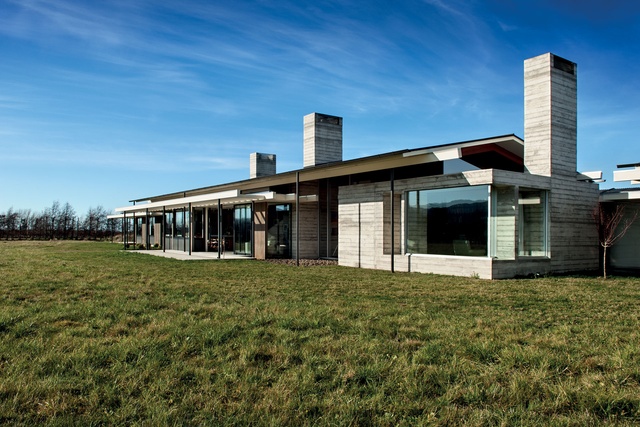
The main structure to the north hosts the social core of kitchen, living and dining areas, study and den. A satellite volume to the east contains two bedrooms, workshop and services, with more secluded quarters kept intimate in the western wing. These components come together in a light and airy Hamptons-esque grandeur, the roofline echoing the seasonally changing hills beyond.
Architect Gerald Parsonson says of the design: “We wanted to use predominantly naturally weathering materials arranged both vertically and horizontally to help create a link with the rural location. We arranged the house as a series of separated gable roof forms, which float across board form concrete and cedar clad walls.
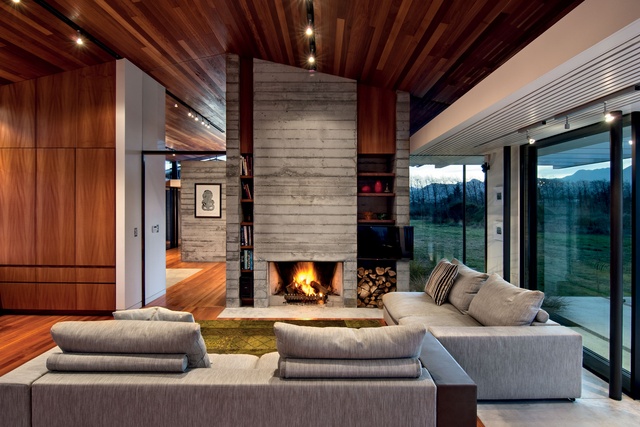
“The chimneys and a television room/den space are also constructed in the board form concrete as a series of solid elements visually anchoring these parts of the house to the land. We were also strongly influenced by the cultivated landscape of the Blenheim area, where lines of orchard trees and vines mark the land in regular patterns. The house responds to these with regular lines of pergolas and posts ready for shrubs and climbers that will help integrate the house with the land further still.”
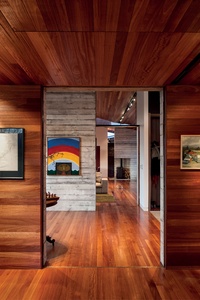
Inside the feeling is contemporary and comfortable, drawing on a richly detailed palette of variegated Sydney blue gum wood, gutsy exposed form-grained concrete, and continuous retractable glass walls that offer unique views of the horizon and the residence’s central area. Forms and lines of sight are carefully composed and articulated, especially noticeable in the combined kitchen and living area where concrete counterpoints steel finishes.
The resulting interior spaces are warm and inviting with all of the charm of country living and the sophistication of classic mid-twentieth century formalist truth-to-materials style. The inspiration comes in part from US-based Jones Studio’s “Low Compound” in Scottsdale, Arizona.
The morning sun comes into the family bedrooms and kitchen area, and midday and late afternoon sun into the main living spaces. The ability to open the main living space to the north or the south takes into account the strong nor’westers and southerlies the site is prone to and the stunning views of the North Hills and southern Dry Hills. Capitalising on the Blenheim region’s high sunshine hours, the house is heated by a solar-powered water-fed underfloor system.
Click here to see more Houses Revisited. And sign up to our email newsletters to receive Houses Revisited straight to your inbox.
Note: These are stories from our archives and, since the time of writing, some details may have changed including names, personnel of specific firms, registration status, etc.



